HTC Desire 816 Review
AC Adapter
USB cable
Headset
Quick start guide
System: Android 4.4 KitKat®
Processor: 1.6 GHz / Quad Core / Qualcomm® Snapdragon⢠400 Cortex-A7 / GPU: Adreno 305
Memory: Internal: 8 GB / RAM: 1.5 GB / Slot type: microSD / Max. slot capacity: 64 GB
Display: Resolution: 1280 x 720 pixels / 5.5" / S-LCD / 267 ppi
Camera: 13 Mpixels / Flash: LED / Front: 5 Mpixels / Video: 1080p full HD
Network: 4G: LTE / 3G: 850/900/1900/2100 MHz / GSM: 850/900/1800/1900 MHz
nanoSIM
Wireless: Bluetooth: 4.0+A2DP / NFC / Wifi: IEEE 802.11 b/g/n
Connection: Jack 3.5 mm / micro USB
GPS: aGPS
Sensors: Accelerometer, Digital Compass, Proximity sensor
Battery: 2600 mAh
Weight: 165 g
Dimensions: 156.6 x 78.7 x 7.99 mm
£299.99
Large clear screen
Lag free performance
Price
Slow focus on camera
Button position
Low internal memory
Last year HTC dipped their toes into the Phablet market with the HTC One Max, a premium beast of a device, this year they have taken aim for a different section of the large handset market with the Desire 816. Unlike the One Max the Desire 816 is a mid range device putting it within reach of many more hands although it is not available in every market.
So how does the 816 perform in use?
Build & Aesthetics
Being a mid range device the 816 doesnât have the full metal unibody design that adorns the One range, instead it is a fully plastic unit in keeping with its Desire heritage. Donât think that being plastic means you have a removable back and battery however, as in keeping with HTCâs beliefs it is an enclosed case. It also misses out on a curvaceous chassis and apart from rounded corners is a simple slab design.
Though the device isnât what you would call ugly, it certainly wonât be picking up and of the design awards that HTC have become use to over the last year.
On the bottom is the standard Micro-USB port and on the top there is the headphone jack socket. Somewhat strangely the power, and volume buttons are all located on the upper left side of the device, and this can take a little getting used to. On the upper right hand edge is a long clip cover which masks the slots for the SD card and dual SIMâs. The back plate has the main camera with flash and the HTC logo. Â On front there are the much saught after HTC Boomsound speaker grills, a five megapixel camera, the 5.5 inch screen and customery HTC black logo bar.
Display
The Desire 816 has a large 5.5″ screen firmly putting it in the “Phablet” category. Â It has a resolution of 720 x 1280 with a PPI of 267 on a LCD2 screen.The display is clear and concise even in bright sunlight but for some the lack of 1280 or higher might be an issue though that said, during my time with the Desire 816 I have not found the display lacking in any way.
Colours are bright and strong with blacks being pretty near pure black. Â Whites can seem a little grey though when they dominate the screen.Â
The large screen is ideal for viewing media, especially in a video mode when combined with the Boomsound speakers.
Camera(s)
The 816 comes equipped with a 5MP front facing camera for all you selfie freaks out there but I found the quality to be a little lacking in lower light conditions compared to the M8. Â In decent light however it was more than up to the job. On the rear HTC have opted for a 13MP main camera with an LED flash.
I found that the auto-focus can be a little slow, so action shots can be problematic but overall I got some really nice shots.  The phone is capable of recording video at 1080p and you can easily extract images from video using HTCâs software.Below is a selection of images taken on the 816 in a variety of different situations.
Software
HTC Sense was at one point considered the ultimate in OEM bloatware, though since the release of Sense 5 with the original HTC One things have changed dramatically. Sense is now probably the best example of a manufacturer taking Android and enhancing it.  The Desire 816 comes with the latest incarnation of HTCâs own UI skin, Sense 6, and it has taken all that was good in Sense 5 and improved upon it. The camera, gallery and people apps far outshine anything that Google currently supply.  Also includes is their own Parent Dashboard for controlling content if you feel you can trust your phone in your little ones hands.  HTC have taken the sensible step recently of updating their apps via the Play Store rather than having to rely on OTA updates which are often held up going through carriers.  They have not been slow to use this feature with a host of updates coming out for most apps. The other feature that Sense has updated since version 5 is Blinkfeed, a homescreen addition that allows you to aggregate social media and news feeds into visually pleasing reader.
Audio
HTCÂ have really made a feature of audio of late. Their HTC Boomsound has proved to be a massive success and the feature has thankfully found its way onto the 816. Stereo speakers sit front facing on the top and bottom of the device and help produce a quality and volume unrivaled by any other OEMâs devices. Combined with the large screen it makes watching videos a pleasure be they YouTube clips or longer movies from the likes of Netflix.
In the car you can happily get by just using the devices own audio for Google navigation, or even for calls with the speaker output turned on.
While HTC no longer have a partnership with Beats they do use their own software sound boost which they have simply called Boomsound in the settings. Playback via headphones is also of a decent quality being both load and clear enough to suit most.
Development Options
Although I didnât root this device (itâs not mine after all) I have had a little dig around, and on the main developer sites there is not really much happening. There is the odd kernel and a few ROMâs, but no great scene as yet.
Performance
The Desire 816 has a Snapdragon 400 SOC but throughout my months use I have yet to come across any determinable lag of any kind. It may fall short of the current crop of flagship devices in power, but Sense 6 runs flawlessly and apps run and switch smoothly. I really canât think of any normal use scenario where the 816 would struggle, and perhaps keeping the resolution at 720p helps this.
Conclusion
During the month I have had with the 816 I found myself using it more and more as my main device. Initially there were a few things about it that just didnât suit me, like the power button being on the left hand side, but as a complete package it has really won me over. I am now contemplating retiring my M7 and sticking solely with the 816. Itâs a great device and just has that undefinable something. The 816 is also a dual SIM device, something that a lot of people are interested in, and it may be the feature that makes you consider it.Â
I found battery life to be more than decent with its 2600 mAh battery and I regularly get up to four hours screen on time with Bluetooth constantly connected to my smart watch.Â






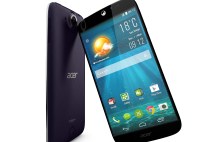
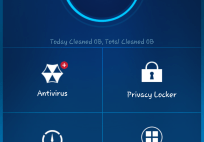
![[App] Lollipop Land; 5.0 easter egg released to play store as game](../../landofdroid.com/wp-content/uploads/2014/11/wpid-wp-1415372216626-resize-204-142.png)



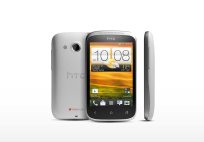
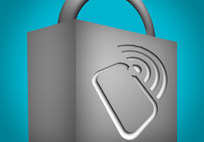




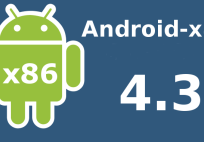
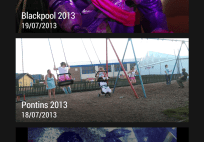
Very nice review, just wish HTC would bring this style of phone to the US as well. We definitely are lacking in mid range HTC devices.
It may sound strange but the Desier 816 is in daily use better than One max - in my opinion.